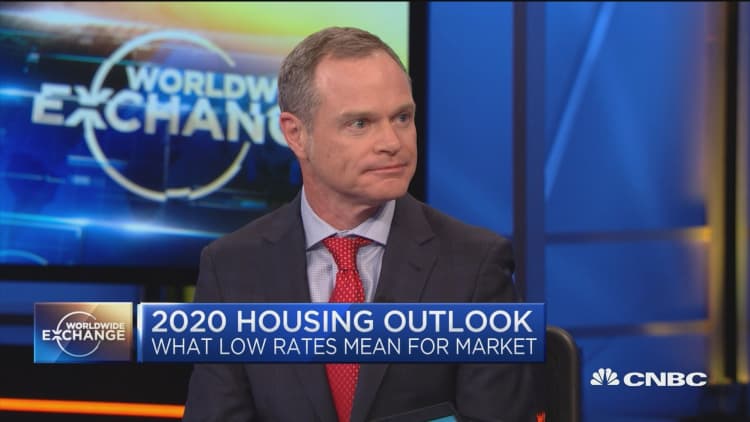The number of homes for sale at the end of November was the lowest on record for the month, according to the National Association of Realtors, which began tracking this metric in 1999. There were just 1.66 million homes on the market, down 5.7% compared with November 2018. That represents a 3.7-month supply at the current sales pace, down from a 4-month supply a year ago.
Supply is leanest on the low end, where demand is strongest. For homes priced below $100,000, inventory was down 15% annually. For those priced between $100,000 and $250,000, supplies were 7% lower annually. Supply is only growing on the high end of the market, where demand is weakest.
The housing shortage has reignited home prices, which had been cooling last year and into the first months of this year. The median price for an existing home sold in November was $271,300, the highest November price reading since the Realtors began tracking in 1999.

"The expectation is that prices are going to continue increasing, especially at the lower price points," said Jessica Lautz, vice president of demographics and behavioral insights at the NAR. "At the very high end there is supply, but there are not many buyers at the very high end of market."
Demand is surging, despite rising prices. It is being fueled by a stronger job market and falling mortgage rates. The average rate on the 30-year fixed mortgage is now a full percentage point lower than it was at this time last year. Buyer traffic rose significantly in November, compared with annual numbers, according to the Realtors Buyer Traffic Index. First-time buyers are out in force, but they made up just 32% of sales, down from the historical norm of around 40%.
"Low mortgage rates, a resilient labor market and sustainable home value appreciation combine to offer enticing buying conditions," said Matthew Speakman, an economist at Zillow. "But a deepening and worrisome inventory shortage, particularly at more-affordable price points, continues to constrain the market and muffle the optimism of many would-be buyers itching to capitalize on these favorable trends."
The nation's homebuilders have been buoyed by this shortage on the existing home side. Builder confidence hit a 20-year high in December, and housing starts and building permits are slowly improving on the single-family side.

"New home inventories, while still a bit below historical averages, are not close to their lows," said David Berson, chief economist at Nationwide. "It's likely that some demand that normally would have gone to the existing home market has shifted to the new home market, given the relatively smaller supply constraints for new homes."
Builders are trying to pivot to the more affordable end of the market, but are not quite there yet. They are still constrained by high costs for land, labor and regulatory compliance. The bulk of new construction is still in the move-up market.


